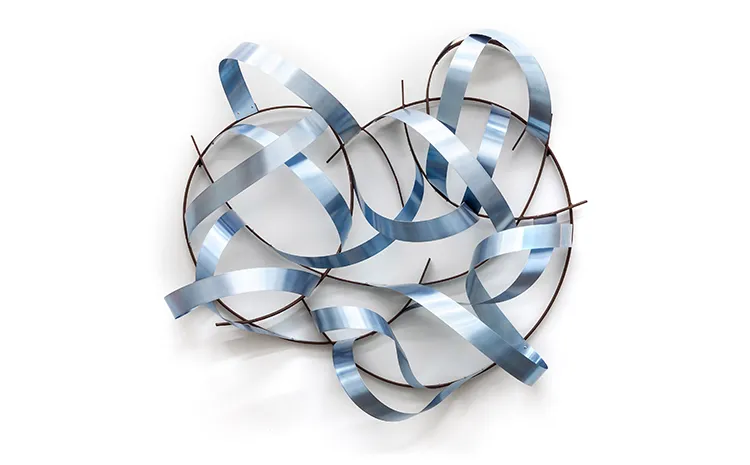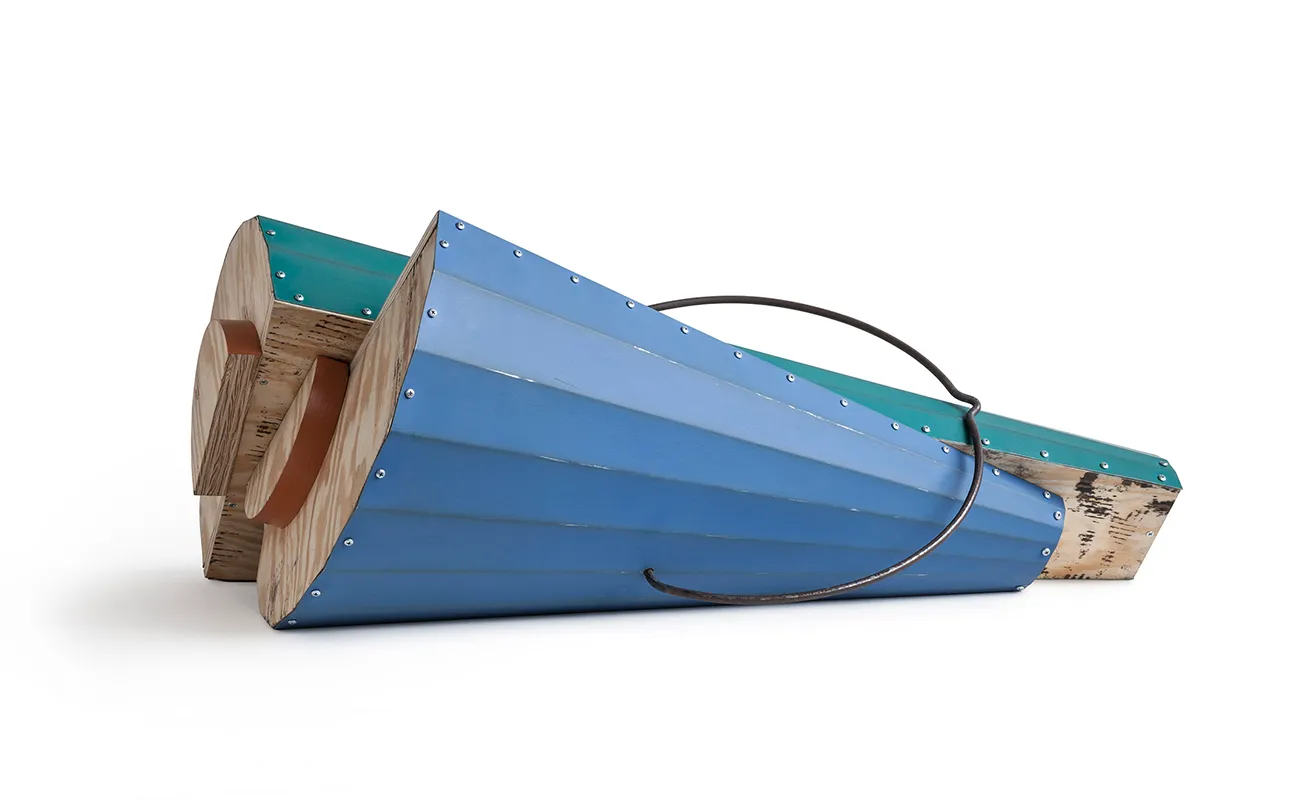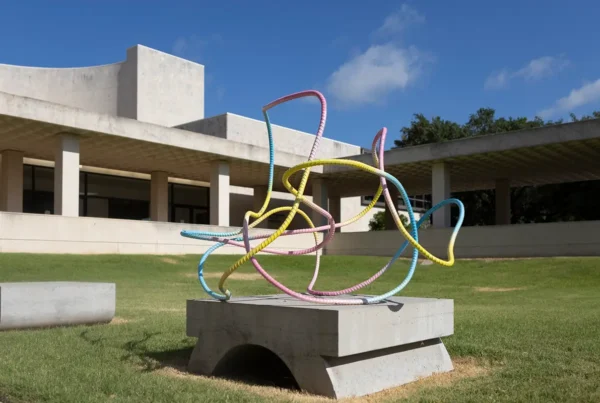“My sculpture is almost entirely abstract… informed by my love of graphic design and typography… an aesthetic throughline is present in my practice which often blurs the lines between art, craft and design.”
Rooted in the Rust
The story of Doug Cannell is intrinsically linked to the city of Detroit, a place of profound change and challenge. Born and raised in a city that experienced dramatic shifts in its socio-economic landscape, Cannell’s early life was set against a backdrop of industrial decline and urban transformation. Witnessing the city’s descent from a bustling industrial hub to a landscape marked by desolation and abandonment, he developed a keen sense of observation and a unique perspective on transformation and resilience.
Cannell’s upbringing in a household that valued creativity and precision played a significant role in shaping his artistic vision. His father, an architect, introduced him to the world of graphic precision and detailed design, instilling in him an appreciation for both the meticulous and the creative. This dual influence is evident in Cannell’s work, which combines a craftsman’s attention to detail with an artist’s flair for the abstract and the organic. The contrasting environments of his youth—both the decaying urban landscape and the structured world of architectural design—served as a fertile ground for his artistic exploration, setting the stage for a career that would continually draw on these early experiences.
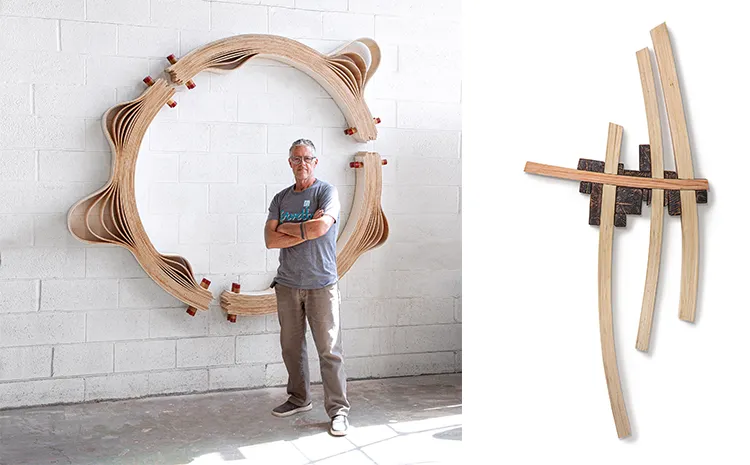
Doug Cannell: The Metamorphosis of an Artist
Cannell’s journey into the world of art was propelled by his intrinsic need to create and his formative educational experiences. Encouraged by an inspiring ceramics teacher, he embraced art not just as a passion but as a viable professional path. This early encouragement led him to explore various materials and forms, transitioning from ceramics to abstract sculptures that incorporate a range of industrial materials. His artistic style, characterized by the interplay of the organic and the industrial, reflects his deep connection to his roots and his ongoing dialogue with the materials themselves.
His approach to art is intuitive, allowing ideas to emerge and evolve naturally, much like the organic processes he finds so captivating. This methodology is not about imposing a preconceived message but rather about letting the subconscious guide the creative process. This intuitive approach has allowed Cannell to explore themes of decay, transformation, and the inherent beauty found in the natural aging of materials, themes that echo his own experiences and observations of his hometown.
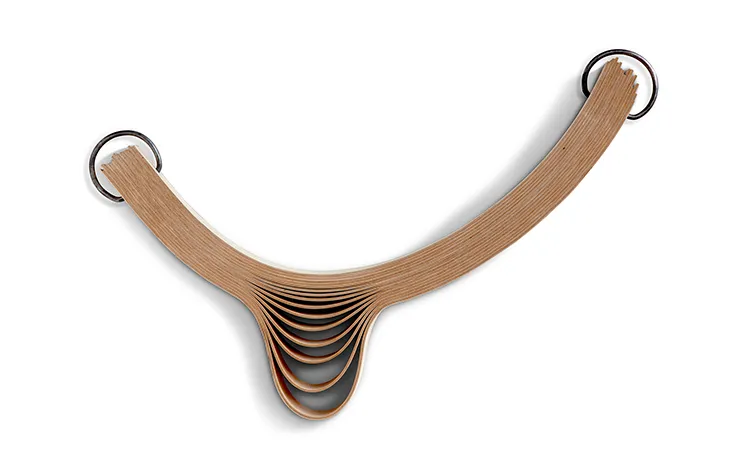
Doug Cannell: The Symphony of Creation
Within the walls of a former stamping plant in Detroit, Cannell has established a sanctuary for his artistic endeavors. His studio, a place where the industrial meets the artistic, is a testament to his commitment to his craft. Here, amidst the tools and materials of his trade, he finds solace in music, an essential component of his creative process. This immersive environment, devoid of distractions, allows him to fully engage with his work, exploring the boundaries of his materials and the possibilities of his imagination.
The significance of music in Cannell’s artistic practice cannot be overstated. Like the artists and musicians who inspire him, Cannell sees his work as a form of composition, a blending of elements that creates a harmonious whole. This synthesis of influences, from the structured to the spontaneous, from the visual to the auditory, informs his approach to sculpture, imbuing his creations with a dynamic, rhythmic quality that is distinctly his own.
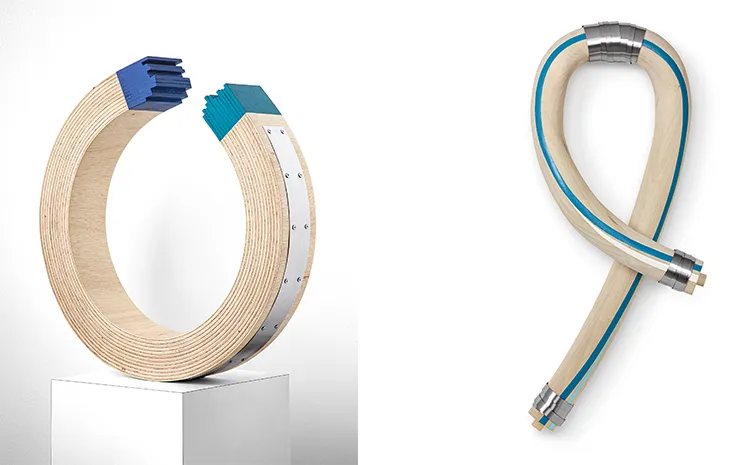
Crafting Connections: Materials, Memory, and Meaning
Cannell’s choice of materials is a deliberate reflection of his artistic ethos. Steel, lumber, rivets, and screws are not just the tools of his trade; they are the bearers of stories, the carriers of time’s imprint. By sourcing his materials from scrapyards and hardware stores, Cannell embraces the inherent beauty and history of these objects, allowing them to inform and shape his artistic expression. This relationship with his materials is reciprocal; they offer him a language with which to explore and articulate his artistic vision.
One of Cannell’s most significant works, “Gravity,” epitomizes his artistic philosophy. This large-scale piece, a sculptural interpretation of the enso circle, represents a confluence of discipline and spontaneity, structure and flow. It is a testament to his ability to transcend traditional boundaries and create art that resonates with a deep sense of meaning and introspection. Through “Gravity” and his other works, Cannell invites viewers to engage with the physicality and metaphoric richness of his materials, encouraging a dialogue that extends beyond the visual to touch on themes of time, transformation, and the eternal cycle of creation and decay.
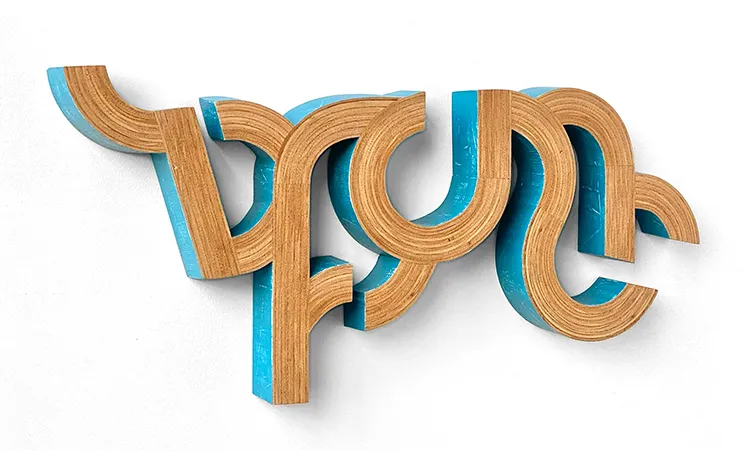
Doug Cannell: The Influence of the Intangible
Doug Cannell’s artistic journey is not solely his own but is deeply intertwined with a myriad of influences that shape his creative output. While the tangible aspects of his work are rooted in his choice of materials and techniques, the intangible—the music he listens to, the city that surrounds him, and the natural world—plays an equally pivotal role. These influences, ranging from the rhythmic complexities of John Coltrane’s saxophone to the organic forms of Mother Nature, infuse Cannell’s work with a depth and diversity that transcend the physicality of his sculptures.
The impact of Detroit, with its story of rise, fall, and ongoing transformation, is particularly profound. The city’s narrative of resilience and reinvention mirrors Cannell’s own artistic evolution, providing a constant source of inspiration and reflection. Just as Detroit continues to navigate its journey of recovery and renewal, Cannell’s work is a testament to the beauty of change and the enduring power of creativity in the face of adversity. This symbiotic relationship between artist and environment is a central theme in his work, reflecting a broader dialogue about place, identity, and the passage of time.
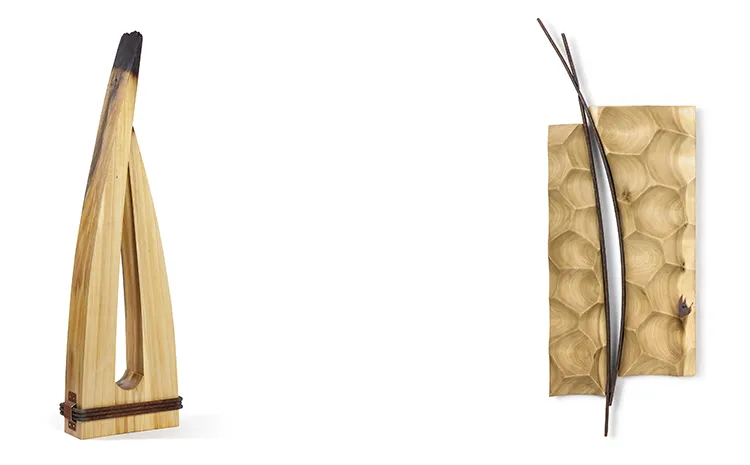
Envisioning the Future: Art, Marketing, and Meaning
Doug Cannell’s creative vision extends beyond the present, constantly pushing the boundaries of what art can be and how it can engage with the world. His latest endeavor, “Ten Kinds of Useless,” is a daring exploration of art’s intersection with commerce and commentary. By pairing sculptures with marketing materials, Cannell challenges conventional perceptions of art, inviting viewers to consider its role and value in a consumer-driven society. This project is emblematic of his willingness to experiment and provoke, qualities that have defined his career and continue to drive his artistic exploration.
In this innovative project, Cannell not only questions the commodification of art but also engages in a playful, critical dialogue with the viewer. Each piece in the “Ten Kinds of Useless” series is accompanied by promotional materials that mimic the language and aesthetics of advertising, creating a juxtaposition that is both jarring and thought-provoking. This approach reflects Cannell’s broader artistic philosophy, one that embraces complexity, challenges norms, and encourages a deeper engagement with the work. Through this fusion of art and commentary, Cannell continues to redefine the boundaries of his medium, offering a fresh perspective on the possibilities of sculpture in the contemporary world.
Doug Cannell’s artistry is a dynamic blend of past and present, tangible and intangible, personal and universal. Through his innovative use of materials, his engagement with a range of influences, and his exploratory approach to themes and concepts, Cannell has carved out a distinctive niche in the world of contemporary sculpture. His work, while deeply rooted in his experiences and surroundings, reaches out to engage with broader questions of identity, change, and meaning, inviting viewers to explore a rich tapestry of narrative and form. As he continues to evolve and push the boundaries of his craft, Doug Cannell remains a compelling figure in the art world, a testament to the enduring power of creativity and the infinite possibilities of artistic expression.
